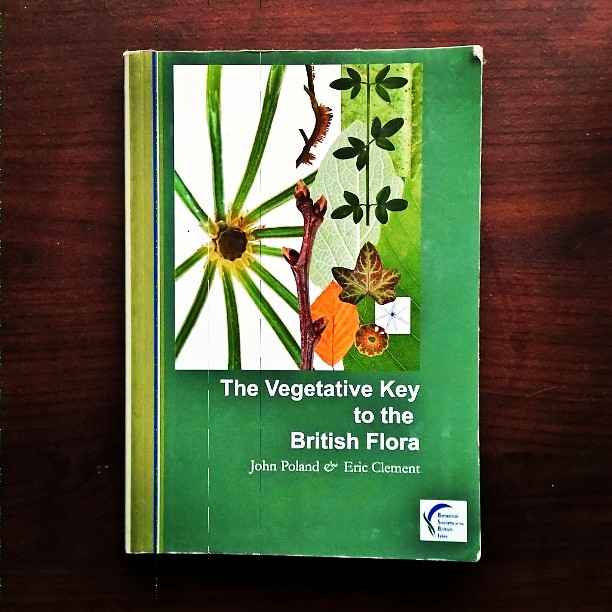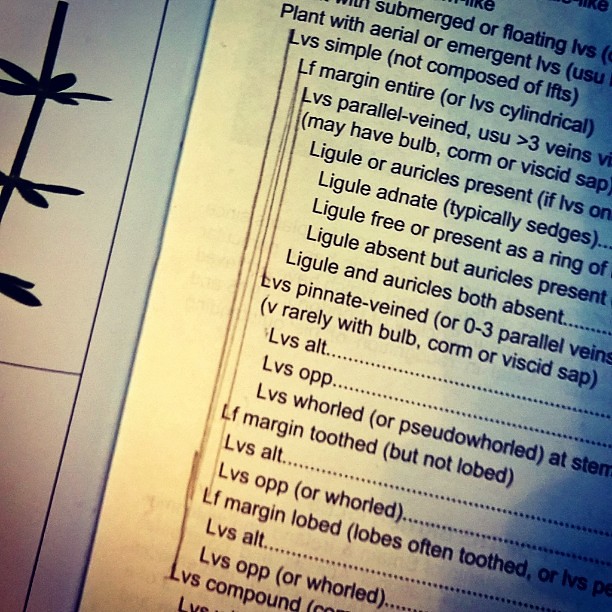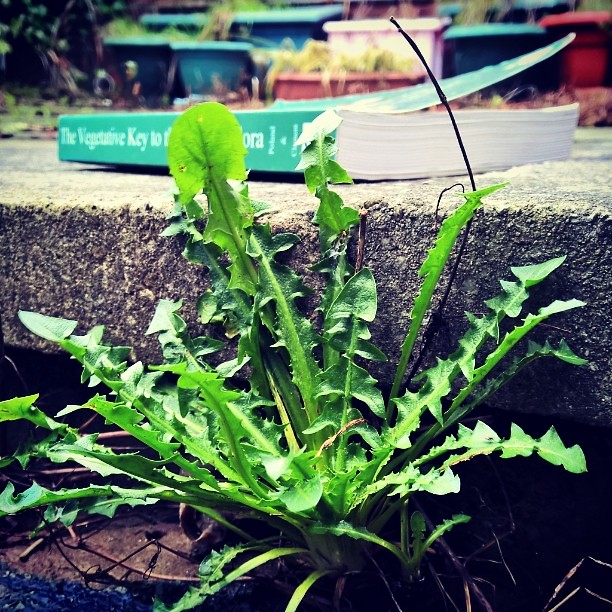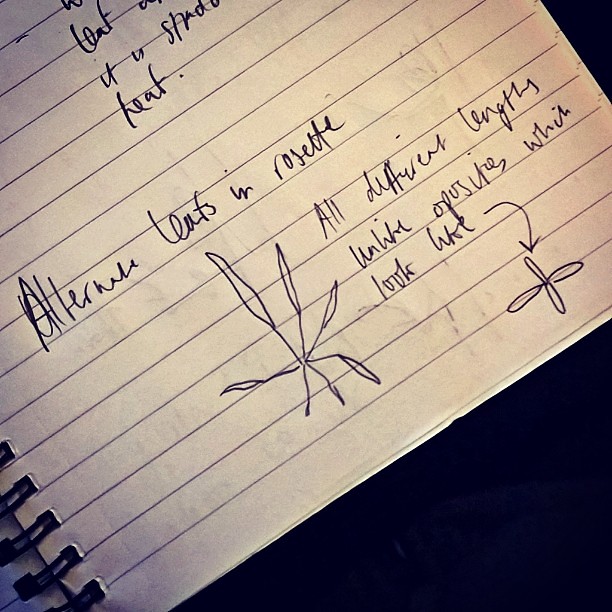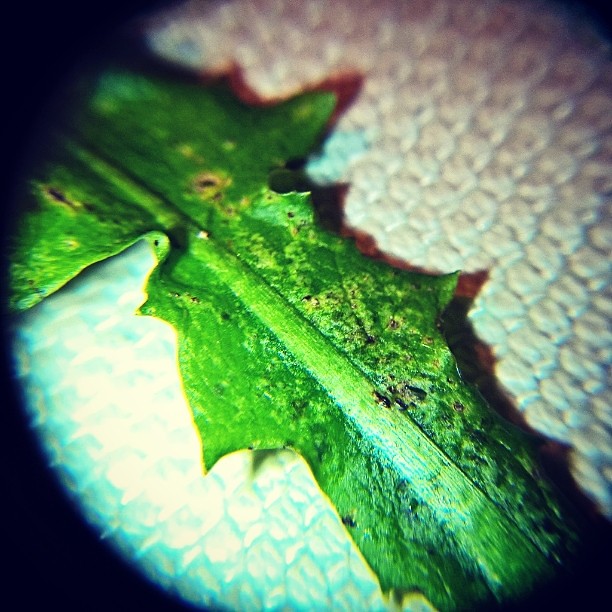Getting to grips with vegetative plant identification.
This is The Vegetative Key to the British Flora by John Poland & Eric Clement:
It’s a magic book that gives you the power to identify British plants in their vegetative state (no flowers) but leaves some of us mysteriously reluctant to use it.
I first heard of the book while doing a course in 2012. I was still getting my head around floral keys generally and the idea of vegetative ID was new to me. Someone asked Ros Bennett to recommend a vegetative key and she recommended Poland. She said it was good and that John Poland was younger than you’d imagine.
I went away and bought it with my usual good intentions, but as time went on and I began to gain a better understanding about how hard identifying plants with flowers was, the idea of attempting to ID them without got shelved along with bryophytes, diptera, Spanish and the ukulele.
Thing is, I knew it wasn’t going to be as hard as those. I had my copy with me when I attended an MMU day course in Shrewsbury, and Mark Duffel talked me through IDing something with it. The key is ever so slightly different to the usual dichotomous floras. It’s polychotomous with sometimes several options to choose from rather than the usual two. Mark drew a few lines in pencil on the opening key to major divisions and I got it…
The polychotomous thing really isn’t a big deal but it can be enough to put you off trying when you aren’t confident. So now I understood how it worked but I continued to procrastinate over veg ID. Four years after purchasing the key it still looked annoyingly new.
Well now I’ve given myself a project to do. As mentioned in my last couple of blogs I’m having a crack at producing a complete flora of the walls, gutters and random green places of Gorse Hill, where I live. Vegetative ID will be really useful to the project so I’m pulling my finger out and finally doing what I should have done all along and just use it so it.
I’m going to talk you though my practice attempts, where I went wrong, what I figured out etc, in the hope that it illustrates how good this key is and encourages a few people like me to get their copy out and have a go too.
Attempt #1. Dandelion.
I went into my back yard with the intention of IDing the first thing I saw. It’s a dandelion I thought. Let’s find out…
The key took me through the following features (my descriptions below are not always direct quotes from the key):
- The leaves are simple, not composed of leaflets.
- The leaf margin is lobed.
- The leaves are alternate. Now I got a bit stuck here because I didn’t realise they were alternate at first. That meant I went wrong and had to retrace my steps. Then I remembered someone had told me before how you tell if if a plant has alternate or opposite leaves by its basal rosette. I had a rummage through my old note pads (always keep your note pads) and found it! This took me to Key P.
- A non climbing herb.
- Plant with latex (I tore a leaf off and there was clearly white latex on my fingers).
- Hairs simple, smooth or absent. The alternatives here were hairs forked or scabrid which on inspection through a hand lens they clearly weren’t…
- Leaf midrib or leaf margins never spiny or prickly. Takes you to Key PG.
- Leaves without large terminal lobe, often dandelion-like (with backward pointing lobes).
- Petiole (leaf stem) hollow. Couldn’t get a photo but it was when you pinched it between your thumb and forefinger.
- This gets you to Dandelion (Taraxacum officinale agg). There are subspecies of dandelion but this was good enough for me.
A good start. It didn’t take long. Next step will be to try something less familiar. Update to follow…

